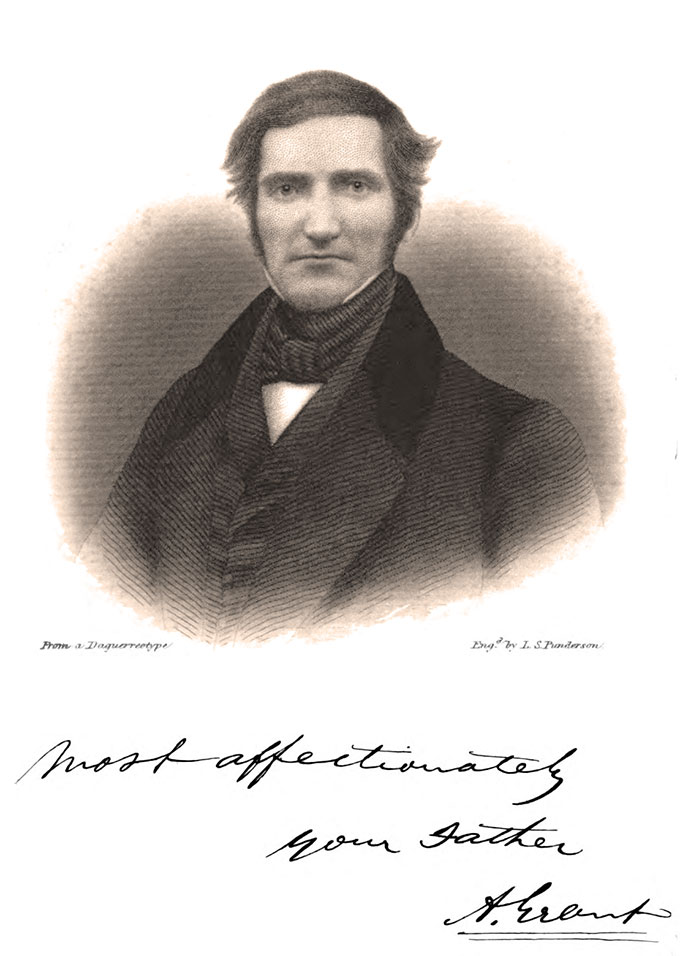ASAHEL GRANT BURNED OUT FOR LOVE OF THE NESTORIANS

[Above: Asahel Grant, frontpiece of Thomas Laurie’s, Dr. Grant and the Mountain Nestorians. Boston: Gould and Lincoln, 1853. Public domain]
SUMMING UP the life of missionary-doctor Asahel Grant, Turkish scholar Esra Danacioglu Tamur wrote, N?YET: Romantik, SONUÇ-LAR: Trajik. (“Intent: Romantic; Result: Tragic.”) That was true not just for Grant but for the people whom he sought to help—the Nestorians.
The Nestorians, sometimes called Assyrians, were people of the Middle East with Christian roots. Some survived in the sea of Islam by submission, but others by ferocity, inhabitants of mountain fastnesses. Their knowledge of Christianity was woefully inadequate. The Nestorian Patriarch at Asheetha, Tiyari (now in the Kurdish region between Turkey and Iraq), was more of a warlord than a holy man, exercising life and death power over his subjects.
Asahel Grant was an American physician. He had married Electa Loomis and practiced medicine in Pennsylvania but, after her death four years into their marriage, he moved to New York. Building up a large practice, he remarried. At a missionary conference, he felt the pull to become a bearer of the gospel to foreign lands. His second wife, Judith Lathrop, agreed and in 1835 they sailed to Iran under the auspices of the American Board of Commissioners for foreign Missions (ABCFM).
Settling his wife and growing family at Uremia, Persia (Iran), Grant traveled through remote and dangerous places in the Ottoman Empire, regions from which the modern nations of Iran, Iraq, and Turkey were later carved. He used his medical knowledge to heal diseases and remove blinding cataracts. The Nestorians had customs reminiscent of the Old Testament Jews. Grant wrote a bestseller about them: The Nestorians; or, The lost tribes: containing evidence of their identity; an account of their manners, customs, and ceremonies; together with sketches of travel in ancient Assyria, Armenia, Media, and Mesopotamia; and illustrations of Scripture prophecy.
For love of them he risked bandits, contagious diseases, inclement weather, treacherous river crossings, and murderous mobs. The Nestorians adored him in return. In the West, his adventures electrified readers much as Livingstone’s later would.
Grant obtained a request from the Patriarch to open a school, which ABCFM did. The steady but little-noticed work of the educators did more lasting good than all Grant’s thrilling hazards and death-defying escapes. Meanwhile Judith and their twin daughters died. Grant neglected his sons to minister to the Nestorians. He won fame, respect, and love—but few converts.
Ottoman rulers viewed with suspicion the growing American and British interest in the Nestorians and moved to suppress them. Grant urged the Nestorians to negotiate peace, but instead they responded to Ottoman concerns with provocative acts, convinced that their warlike spirit and mountain fastnesses made them invincible. They did not even prepare for war as prudence would dictate. In the end they suffered a tragic defeat.
Grant himself barely eluded a Muslim and Kurdish coalition. After a harrowing flight to Mosul in 1843, he tended sick and wounded Nestorian fugitives who descended from the mountains. The following year he contracted typhus from his patients. He died on this day 24 April, 1844. The city of Mosul mourned and high dignitaries honored his memory when he was buried the following day.
—Dan Graves
----- ----- -----
Asahel Grant worked largely in the area of modern Iran, where Christians still suffer persecution. Learn more in A Cry from Iran, streaming at RedeemTV







